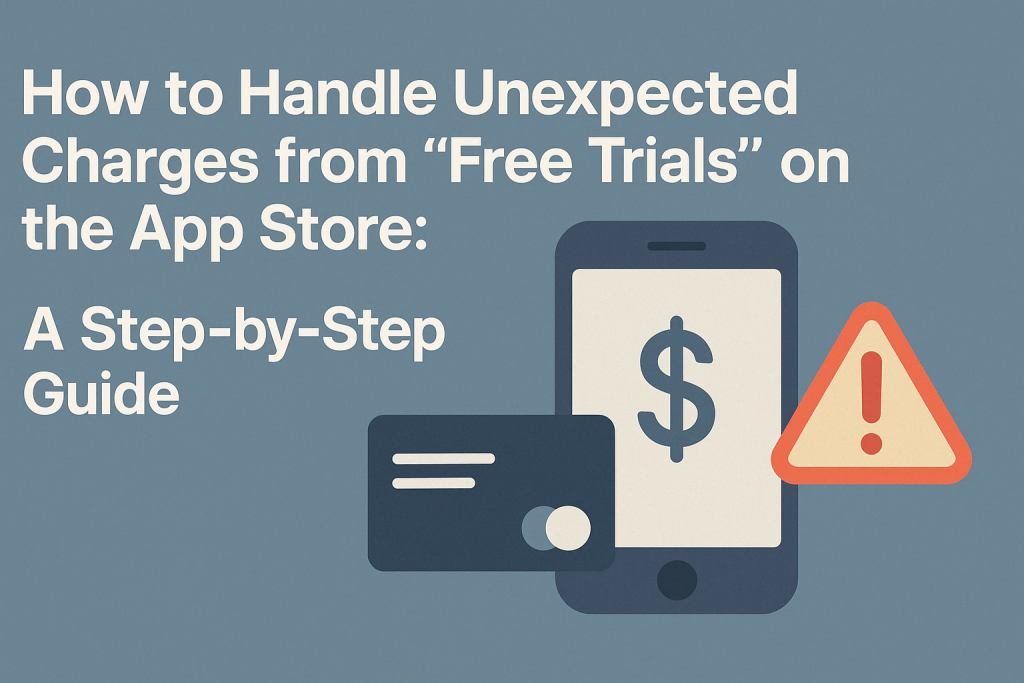How to Handle Unexpected Charges from “Free Trials” on the App Store: A Step-by-Step Guide
A Reddit user recently reported being charged $97.41 immediately after signing up for what was advertised as a 14-day free trial for the Mimo Pro app. Despite seeing a message confirming the start of their trial, the user was billed on the spot, and their refund request through Apple was denied. This scenario is unfortunately not uncommon, and it underscores the need for users to tread carefully when dealing with subscriptions through the App Store.

Here’s a comprehensive, step-by-step guide to understanding, managing, and disputing unexpected charges from subscription apps, especially those offering “free trials.”
Step 1: Understand How App Store Free Trials Work
Apple allows developers to offer free trials that automatically convert to paid subscriptions. However, eligibility conditions apply:
- Free trials are generally only available once per Apple ID per app.
- If you’ve used the trial before (even years ago), you may be charged immediately.
- Some apps may appear to offer a free trial but still trigger an instant charge due to how the developer structures the pricing logic.
Tip: Always double-check the trial terms in the fine print of the subscription screen before confirming.
Step 2: Check Your Subscriptions Immediately
Go to:
- Settings > [Your Name] > Subscriptions
- Find the app in question (e.g., Mimo)
- Check if it’s listed as a trial or a paid subscription
- If you don’t see the word “Trial” or if it says “Renews” immediately, that’s a red flag.
Canceling a subscription here can stop future renewals, but won’t refund a charge already made.
Step 3: Request a Refund Through Apple
Apple has a dedicated refund request process, though it’s not always successful:
- Visit: https://reportaproblem.apple.com/
- Log in with your Apple ID
- Find the item in question (e.g., “Mimo Pro – Yearly Plan”)
- Select “Request a refund” as the reason
- Choose the appropriate reason like “Item didn’t work as expected” or “Accidental purchase”
- Submit and wait for Apple’s response
If Apple denies the refund, there’s no formal appeal process, but you can contact Apple Support directly to explain your case.
Step 4: Consider Eligibility Factors
Apple’s system checks for:
- Prior use of the free trial with the same Apple ID
- Payment method legitimacy
- Timing of the cancellation or refund request
If you’re within 48 hours of the charge, your chances for a successful refund increase.
Step 5: If Denied, Explore a Chargeback
If Apple won’t budge:
- Contact your bank or credit card provider to initiate a chargeback
- Provide evidence (screenshots, trial offer text, Apple’s denial)
- Be aware: Apple may temporarily freeze your Apple ID, requiring a call to unlock
- You may be restricted from using the same payment method on your Apple ID in the future
This is a nuclear option, but can be effective if you genuinely feel scammed.
Step 6: Protect Yourself from Future Incidents
- Turn off auto-renewals immediately after activating any free trial
- Use virtual cards or prepaid cards for subscriptions
- Regularly audit your App Store subscriptions
- Document screenshots of all app messaging during signup, this helps in disputes
Final Thoughts
While Apple’s ecosystem offers convenience, incidents like the $97 Mimo charge reveal weaknesses in oversight, particularly for subscription-based apps using aggressive billing tactics. Consumers must remain vigilant, understand eligibility nuances, and act quickly when something feels off.
If you’ve been burned by a deceptive app trial, this guide can help you navigate the frustrating path toward resolution. Be persistent, keep records, and don’t hesitate to escalate when needed.